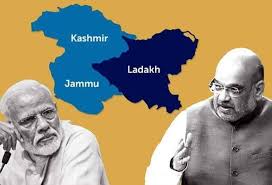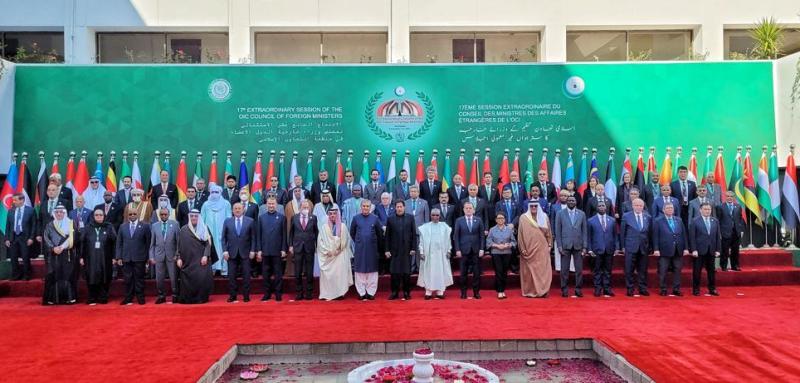A Region Holding Its Breath
By: Javid Amin | Srinagar | 05 Aug 2025
Today, August 5, 2025, the air in Kashmir feels heavy—not just with the summer monsoon, but with the weight of unspoken expectations. It marks six years since the abrogation of Article 370, the constitutional provision that once granted Jammu & Kashmir a special status within the Indian Union.
Across the Valley and beyond, a mixture of speculation, uncertainty, and cautious optimism is sweeping through political circles, civil society, and ordinary homes. The government remains silent. The people, however, are wide awake.
What’s Stirring the Political Pot?
High-Level Meetings in New Delhi
The renewed political buzz stems from a series of confidential meetings in New Delhi. Sources confirm that Prime Minister Narendra Modi, Home Minister Amit Shah, and President Droupadi Murmu have recently met—raising eyebrows across party lines and triggering speculation of a possible major announcement regarding Jammu & Kashmir.
No official word has emerged, but political radar is blinking red.
Cryptic Statements from Key Players
Omar Abdullah’s Tease
National Conference (NC) leader Omar Abdullah, former Chief Minister of Jammu & Kashmir, added to the intrigue with a cryptic post:
“Hope floats. Something positive may just happen during the monsoon session. Let’s wait.”
His words were intentionally vague, fueling speculation without confirmation. Yet, they sparked renewed hope among NC supporters for statehood restoration or Assembly elections.
PDP’s Warning Signal
On the flip side, Iltija Mufti, daughter of Mehbooba Mufti and a prominent PDP spokesperson, struck a more somber note. She warned of “ominous clouds”, likening the current atmosphere to August 2019, when Article 370 was revoked.
“It feels like déjà vu,” she said in a media interaction. “When silence precedes action, Kashmir usually pays the price.”
This divergence in tone—from cautious hope to outright apprehension—exemplifies the region’s complex political mood.
What’s on the Ground: Speculation Runs Wild
Rumors and theories have become the Valley’s favorite pastime this week. Among the most discussed possibilities:
1. Restoration of Statehood
There is growing belief that the Centre might announce restoration of statehood to Jammu & Kashmir—something promised earlier by the Modi government. While full statehood with special status seems unlikely, partial administrative autonomy could be on the table.
2. Announcement of Assembly Elections
The Election Commission has conducted recent surveys and constituency-level exercises. Many see this as a prelude to J&K Assembly elections, possibly announced during or after the ongoing Monsoon Session of Parliament.
3. Further Bifurcation?
A more controversial theory suggests the further bifurcation of the Union Territory—possibly carving out Chenab Valley or Pir Panjal regions as separate administrative divisions. While there’s no confirmation, this idea evokes deep anxiety in many quarters.
4. Reinstating Legislative Assembly Without Statehood
Another possibility floated by experts is that a legislative assembly may be restored—but without full-fledged statehood. This would allow democratic processes like elections to return, while keeping administrative power centralized.
Congress Declares August 5 a ‘Black Day’
The Indian National Congress has not held back. Declaring August 5 a “black day”, the party plans to organize:
-
A state-wide hunger strike on August 9
-
Mass social media campaigns using hashtags like #RestoreStatehood
-
Press conferences labeling the 2019 move as ‘undemocratic and unconstitutional’
In a statement, Congress leaders reiterated that the 2019 decision:
“Betrayed the trust of the people of Jammu & Kashmir and reduced a historical state to a political experiment.”
Security vs Sovereignty: A Delicate Balance
A Drop in Terror Incidents
According to official data, terror-related deaths in Jammu & Kashmir have declined by 33% since 2019. Security agencies point to successful counterinsurgency operations and a relatively quieter LoC (Line of Control).
This drop has allowed the Centre to claim that the abrogation of Article 370 brought peace and normalcy to the region.
But Peace Remains Fragile
Despite the statistics, underlying tensions remain. Regular internet shutdowns, arrests under the Public Safety Act (PSA), and tight surveillance of dissent have raised serious human rights concerns.
Political analysts warn:
“Security is not just the absence of violence. It’s the presence of justice and democratic processes.”
The Economic Reality: Behind the Calm
While the security situation has improved, Kashmir’s economy tells a different story. Key economic indicators highlight persistent challenges:
1. Unemployment
Kashmir continues to rank among the top five regions with highest youth unemployment. Many educated young people are still dependent on:
-
Government jobs (few and far between)
-
Gig work
-
Migration to metros
2. MSME Closures
Micro, Small, and Medium Enterprises (MSMEs)—especially in handicrafts, tourism, and horticulture—have faced severe losses. The 2019 lockdown, followed by the COVID-19 pandemic, crippled small businesses.
Despite government schemes, revival has been slow, and credit access remains limited.
3. Youth Disillusionment
Youth, once promised “Naya Kashmir” and tech jobs, now feel increasingly alienated and politically disempowered. The absence of an elected Assembly or Panchayati Raj system exacerbates this disconnect.
Assembly Elections: A Sliver of Hope?
There is growing demand for Assembly elections—not only from opposition parties but also from former BJP allies like Apni Party and People’s Conference.
Why it matters:
-
An elected Assembly would help restore faith in democratic processes.
-
It would allow regional leaders to represent public grievances effectively.
-
It could de-escalate tensions and prevent youth from turning toward extremism.
Yet, the delimitation process, completed in 2022, has led to accusations of gerrymandering, with some parties alleging it favors the BJP.
Still, elections could mark the first meaningful political engagement since 2018, when the last Assembly was dissolved.
Public Sentiment: Between Skepticism and Hope
Talk to any Kashmiri—shopkeeper, student, or political worker—and you’ll find a range of emotions:
-
Some welcome the idea of elections, seeing it as a return to normalcy.
-
Others fear a repeat of 2019—a drastic move followed by curfews, clampdowns, and confusion.
-
Many remain uninterested, having lost faith in both regional and national leadership.
What binds them all is a desire for dignity and representation.
Media and Civil Society: Caught in the Crossfire
Media Under Pressure
The local press in Kashmir has been under unprecedented stress:
-
Raids on journalists and media houses
-
Suspension of accreditations
-
Fear of retribution for critical reporting
Many newspapers now choose self-censorship over risk.
Civil Society Muzzled
NGOs and human rights groups find it increasingly difficult to operate. Several have lost FCRA licenses, making international funding impossible.
Even educational initiatives and public libraries face government scrutiny, limiting grassroots activism.
Legal and Constitutional Questions Persist
Article 370: Still in Court
A batch of petitions challenging the validity of Article 370’s abrogation is still pending in the Supreme Court. Despite years of delay, a final judgment could reshape the constitutional understanding of federalism.
Legal scholars remain divided:
-
One camp believes the move was within the executive’s power.
-
Others argue it bypassed democratic consent and violated constitutional procedures.
Land and Domicile Changes
New land and domicile laws have led to accusations of demographic engineering. Critics argue these laws enable outsiders to settle in Kashmir, threatening its cultural and demographic identity.
The Centre maintains that these laws aim to bring investment and integration.
International Reactions: A Muted Chorus
The global response to Kashmir’s post-2019 changes has largely faded. While initial months saw critical coverage and human rights alarms, most Western governments now prefer diplomatic engagement with India on trade and security issues.
Only Pakistan raises Kashmir at global forums, but with diminished credibility due to its own internal crises.
What Happens Next?
With Parliament in session, and the Valley on edge, the next few days or weeks could shape the next decade of Kashmir’s future.
Possible Scenarios:
| Scenario | Impact |
|---|---|
| Full statehood restored | Massive goodwill, potential electoral participation |
| Assembly elections announced | Controlled optimism, regional engagement resumes |
| No major announcements | Deepened alienation, risk of unrest |
| Further bifurcation | Unrest, legal challenges, renewed international focus |
Conclusion: A Region at Crossroads
August 5 is no longer just a date in Jammu & Kashmir. It is a symbol—of rupture, of resistance, and perhaps of resurrection.
Whether the next steps involve statehood, elections, or deeper integration, one thing remains clear: the people of Kashmir want to be heard—not as subjects of security, but as citizens with rights.
As the region stands at the edge of history once again, the question is no longer what will happen to Kashmir, but what Kashmir will become.



